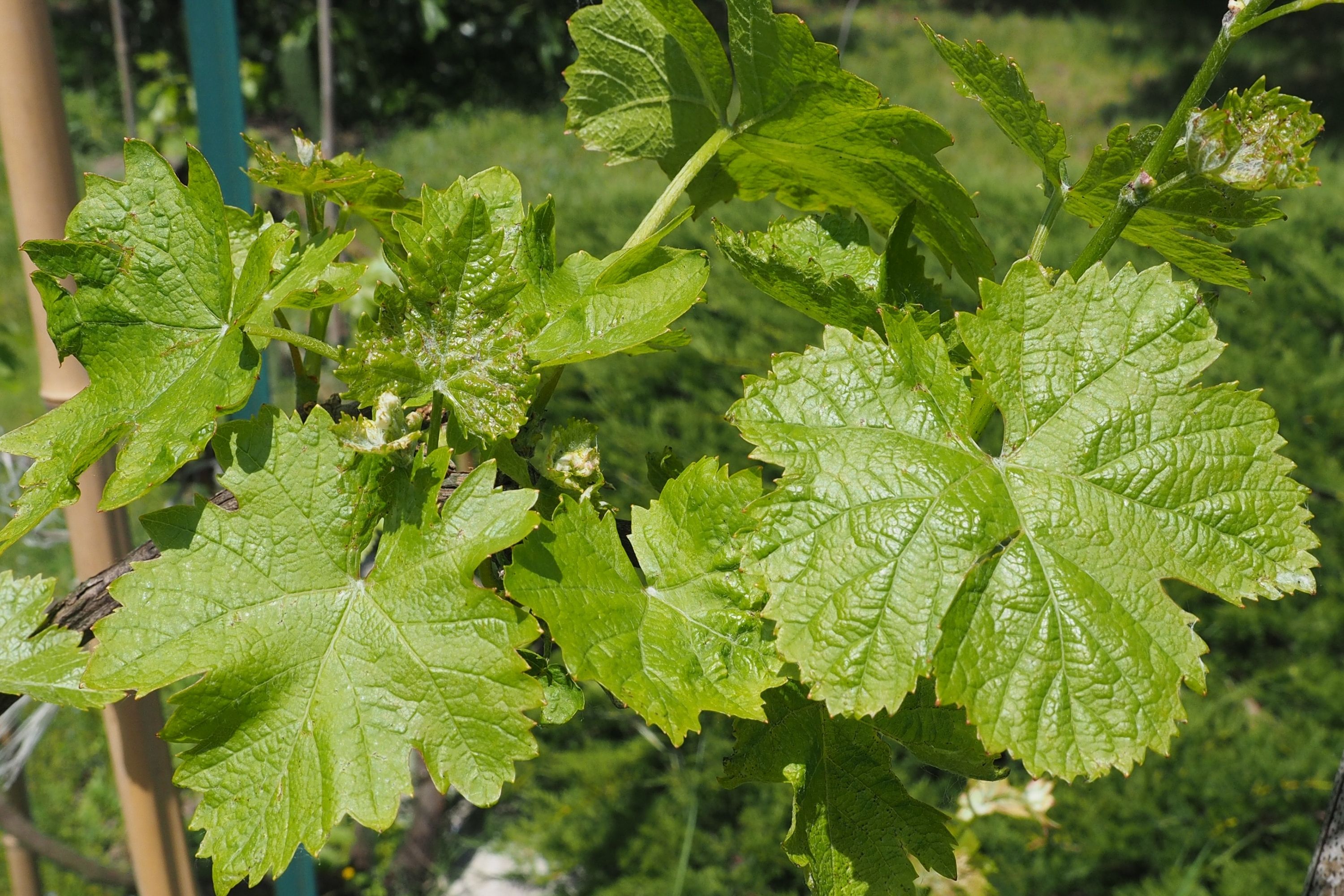Crimson glory vine
(Vitis coignetiae)

Description
Vitis coignetiae, called crimson glory vine, is a plant belonging to the genus Vitis that is native to the temperate climes of Asia, where it can be found in the Russian Far East, (Sakhalin); Korea; and Japan (Hokkaido, Honshu, Shikoku). It was described botanically in 1883. It is called meoru in Korean and yama-budo in Japanese. The vine is very vigorous, with purple shoots. The deciduous leaves are large (15 to 30 cm in diameter), simple, orbicular, toothed, with deep petiole. First green, they turn red-orange in autumn. Wild vines can be male, female or hermaphrodite. Clusters are large with small berries and large purple seeds. It is found in the mountainous regions of Japan and up to 1300 m altitude in Korea. The species name is dedicated to Mr. and Mrs. Coignet who reportedly brought seeds back from their trip to Japan in 1875. This vine was also reported in 1884 snowy regions of Japan by Henri Degron sent to East Asia to seek wild vines resistant to Phylloxera. Degron sent specimens to a Professor Planchon of Montpellier who named them Vitis coignetiae but did not retain them due to their low resistance to phylloxera. Degron planted a vineyard in Crespières, Île-de-France where one of the vines reached a length of 32.8 meters and a height of 2.8 meter. In the cooler Norman climate the vine produces a bitter wine, rich in color and extract. In East Asia it is grown as an ornamental plant for its crimson autumn foliage; and as an Oriental medicinal plant. It is a recipient of the Royal Horticultural Society's Award of Garden Merit. It is used to produce wines in Korea and Japan. These are at first bitter, but softened with the addition of sugar. Vitis (grapevines) is a genus of 79 accepted species of vining plants in the flowering plant family Vitaceae. The genus is made up of species predominantly from the Northern Hemisphere. It is economically important as the source of grapes, both for direct consumption of the fruit and for fermentation to produce wine. The study and cultivation of grapevines is called viticulture. Most cultivated Vitis varieties are wind-pollinated with hermaphroditic flowers containing both male and female reproductive structures, while wild species are dieceous. These flowers are grouped in bunches called inflorescences. In many species, such as Vitis vinifera, each successfully pollinated flower becomes a grape berry with the inflorescence turning into a cluster of grapes.
Taxonomic tree:







